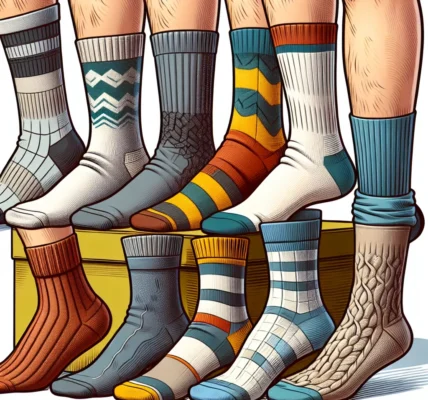Increased Circulation
Wearing compression socks has been shown to provide a range of surprising health benefits, one of which is the significant improvement in circulation. Compression socks work by applying pressure to the legs, helping to squeeze the veins and arteries, thus promoting better blood flow. This increased circulation can be particularly beneficial for individuals who spend long hours sitting or standing, as it helps prevent blood from pooling in the legs. By enhancing circulation, compression socks can reduce the risk of blood clots and swelling, as well as alleviate symptoms of conditions like varicose veins and lymphedema.
Furthermore, the improved circulation facilitated by compression socks can enhance athletic performance and aid in post-exercise recovery. With better blood flow, muscles receive more oxygen and nutrients, leading to increased endurance and reduced muscle fatigue. The quicker removal of metabolic waste products from the muscles also helps to minimize soreness and expedite the healing process. Whether for everyday wear or during physical activity, the enhanced circulation from compression socks brings about notable advantages for overall health and well-being.
Reduced Swelling and Inflammation
Wearing compression socks can have surprising health benefits, with one of the most significant being the reduction of swelling and inflammation in the legs and feet. These specialized socks apply gentle pressure to the ankles and legs, promoting better blood flow and preventing fluid buildup. As a result, they are particularly beneficial for individuals who spend prolonged periods sitting or standing, such as office workers, frequent travelers, or individuals with certain medical conditions.
The compression provided by these socks helps to prevent the accumulation of fluid in the lower limbs, which can lead to swelling and discomfort. Additionally, improved circulation aids in reducing inflammation, making compression socks a valuable asset for those dealing with conditions such as varicose veins or lymphedema. Athletes and fitness enthusiasts also utilize compression socks to aid in muscle recovery and reduce exercise-induced swelling.
Research has shown that wearing compression socks during long flights or extended periods of inactivity can significantly decrease the risk of developing deep vein thrombosis (DVT) due to the improved blood flow. It is important to note that the level of compression in the socks plays a crucial role in their effectiveness, and individuals should consult with a healthcare professional to determine the most suitable pressure for their specific needs.
In conclusion, the use of compression socks offers an array of health benefits, notably the reduction of swelling and inflammation in the legs and feet. Whether for medical reasons or as a preventive measure, incorporating compression socks into daily attire can contribute to overall leg health and enhanced well-being.
Improved Muscle Recovery
Compression socks are a valuable tool for not only improving circulation and preventing blood clots, but also for enhancing muscle recovery. The graduated pressure exerted by compression socks helps to improve blood flow, which in turn facilitates the delivery of oxygen and nutrients to tired and sore muscles. This boost in circulation can significantly reduce muscle fatigue and soreness, allowing for a speedier recovery after physical activity or exercise.
Furthermore, wearing compression socks during and after intense workouts has been shown to aid in the removal of metabolic waste products, such as lactic acid, from the muscles. This process helps to reduce muscle soreness and inflammation, promoting a quicker recovery. Athletes and fitness enthusiasts often report feeling less muscle fatigue and stiffness when wearing compression socks, allowing them to bounce back more rapidly for their next training session.
Research has indicated that wearing compression socks can also minimize the risk of muscle micro-tears and swelling, which are common after strenuous physical activity. By providing targeted compression to specific areas of the leg, these specialized garments can help to stabilize muscles and reduce vibration, ultimately leading to less damage and a speedier recovery. Overall, the use of compression socks for improved muscle recovery is supported by both scientific evidence and anecdotal reports from individuals who have experienced the benefits firsthand.
Prevention of Blood Clots
Wearing compression socks may offer surprising health benefits, particularly in the prevention of blood clots. Compression socks are designed to improve blood circulation in the legs, which can help prevent the formation of blood clots. This is especially important for individuals who have a higher risk of developing blood clots, such as those who are sedentary for long periods, travel frequently, or have a history of blood clotting disorders.
The gentle pressure applied by compression socks helps to keep the blood flowing efficiently, reducing the likelihood of it pooling or clotting in the legs. This can be especially beneficial during long periods of inactivity, such as when sitting on long flights or working at a desk for extended periods. By supporting healthy circulation, compression socks can play a valuable role in preventing the development of deep vein thrombosis (DVT) and other clotting complications.
Additionally, wearing compression socks can also provide relief for individuals who have already experienced blood clotting issues. By promoting circulation and reducing swelling, these specialized socks can alleviate discomfort and contribute to the overall management of conditions related to blood clotting.
In conclusion, the use of compression socks offers multifaceted benefits, with the prevention of blood clots being a significant advantage. Their ability to support healthy circulation and reduce the risk of clot formation makes them a valuable tool in promoting overall vascular health and well-being. If you are at risk of blood clots or simply want to support your circulatory system, incorporating compression socks into your daily routine may offer substantial advantages.




